Drachm, Dirham, Thaler, Pound (brochure)
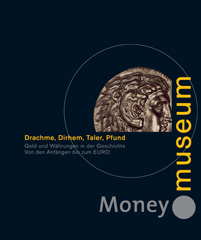
You will be guided through the monetary and cultural history of Europe by means of many carefully drafted historical maps - from Mesopotamia to the Euro of modern times.
Drachm, Dirham, Thaler, Pound (brochure, free download)
Contents:
- The Ancient Orient
- The Coin’s Birth
- The Drachm
- The Denarius
- The Solidus
- Dinar and Dirham
- The Penny
- Groschen, Gulden, Thaler
- The Spanish Peso
- The Dutch Guilder
- The Maria Theresa Thaler
- The Franc
- The Pound Sterling
- The US Dollar
- The Euro
Some examples follow:
3rd millennium BC—first predecessors of money
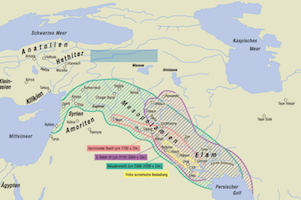
The first very advanced civilizations of humankind developed in Mesopotamia and Egypt where rivers made the fields fertile. It is there that we discover the roots of what is known as money today. In Mesopotamia, silver was used as early as the 3rd millennium B C to settle accounts. Certainly no “coins” were used, but crude metal which was weighed. Authorities strictly controlled the weights applied.
The man in the street, however, did not calculate in silver, but in grain, which was used as a kind of alternative money in precisely measured quantities.
The Coin's Birth; Between Persians and Greeks
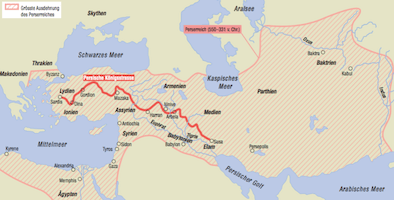
The first coins in history were produced in Asia Minor, in the borderland between the Persian Empire and the Greek world, during the first half of the 6th century B C. They looked like little nuggets, were of standardized weight and made of electrum, an alloy of gold and silver. A symbol on the obverse identified them as a product of a certain source. We do not know whether these first coins were produced by traders, craftsmen, rulers or priests.
Rome’s successor—the Byzantine empire
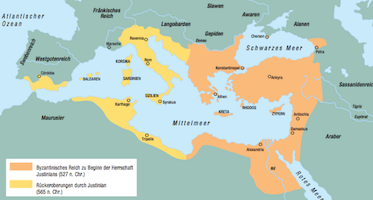
While the Western Roman Empire perished in the turmoil of the migration period, Roman administration, Roman economy, and the Roman army survived in the eastern part of the empire. This part is called the Byzantine Empire by today’s historians, after Byzantion, the name of the Greek city where the new capital city of Constantinople was founded. Even though the Byzantine emperor had to tolerate the loss of important territories in the Near East, in Africa and the Balkans, the Byzantine Empire existed for nearly another 1,000 years after the conquest of Rome. In 1453 the Turks captured it and made it their own capital.
Today’s Islamic world
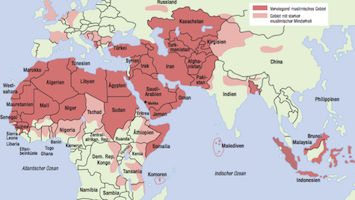
Today 1.4 billions of individuals, which are about 28 % of the world’s population, profess to Islam. The Islamic religion is mainly spread over desert areas extending from the Sahara over the Near East and the Caucasus Mountains to central Asia. But in many other states, Islam is predominant, too. Indonesia, for example, is the state
with the largest number of Muslims worldwide. The Islamic countries are intergovernmentally organized in the Organization of the Islamic Conference, the OIC; some countries with a substantial Muslim minority belong to the OIC as well.
The controversial issue whether or not a secular Muslim state is possible became an essential question for all states inhabited by Muslims. Since the Cairo Declaration, fundamentalist politicians have pressed for the Sharia to be made the basis of legislation in all Muslim states.
The different systems of values of the states ruled by Islamic fundamentalists and of the Western democracies, influenced by Christianity and capitalism resulted and still result in a series of attacks by extremists from both sides.
The Dutch merchants’ empire
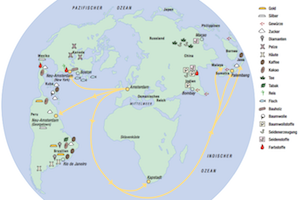
The vicinity to the rough North Sea had made the Dutch excellent seamen sailing the Seven Seas. The Dutch East India Company, which dominated the spice trade in India and Indonesia, was the most important Dutch trading company. It had a monopoly of trade within all territories east of the Cape of Good Hope and supplied half of Europe with spices like cloves, nutmeg and cinnamon. The Dutch West India Company carried out trade with West Africa and America. New Amsterdam became its best-known colonial settlement, known as New York today.
Separation or unity?— The American Civil War
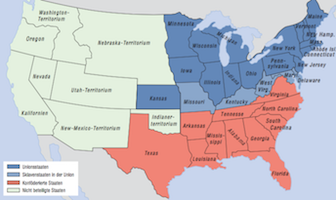
The American Civil War (1861–1865), the war between the Union and the Confederacy of America which was officially justified either with wanting to abolish slavery or insisting on the necessity of it, cost the lives of more Americans than any other war in the history of the United States. Still today, it is engraved in the collective memory of all Americans.
The Civil War initiated important economic changes which have set the tone of the American economic history for many years: the industrialized North had won the victory over the South, traditionally a rural area. After the war, the Union forced its economic system upon the defeated Confederate States. At the same time, the administration was centralized and numerous privileges of the federal states were abolished; Congress, for example, imposed the first national income tax then.